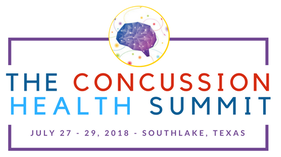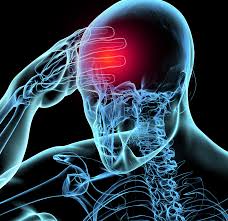The 2018 Concussion Health Summit was held in Dallas in July. At this event, experts from a wide variety of health care practice areas gathered to collaborate with each other and with the conference participants with the mutual goal of improving the way in which we collectively provide treatment for patients that have sustained a head injury. Concussions are tricky injuries – no two are precisely alike, and thus the best course of treatment for each injury is not the same. Also, what we know about “best practice” for concussion treatment has changed A LOT over the course of the last 10 years. One of the best parts about this unique Concussion Health Summit event was the opportunity to hear about all of the advancements that have been made recently in concussion care. It is now recognized that a multi-faceted approach to treatment yields the most positive results. Health care practitioners with a variety of areas of expertise are providing excellent treatments: manual physical therapy to correct mechanical problems in the spine that resulted from the injury; vision therapy to address the issues with the visual sense that often occur after a brain trauma; corrective vestibular therapy to improve balance and decrease dizziness, which is one of the “hallmark” symptoms of a concussion; neuropsychiatric care for mood disturbances that often accompany concussion injuries; sleep training to ensure that the injured brain gets sufficient rest and recovers normal sleep rhythms; athletic training to help athletes get ready for return to their game. Concussion care is a collaborative endeavor.
Unfortunately, the advice that patients and their families are currently being given after a concussion occurs is probably too often outdated. It takes time for health care practice to change across the board, as the information regarding “best practice” for any particular condition or injury gradually seeps into the collective knowledge base of all of the medical providers “in the field”.
One of the biggest “take home” messages provided at the Concussion Health Summit is that EARLY INTERVENTION after this type of injury is important. Specifically, it is recommended that some sort of treatment be initiated starting 24-48 hours after a concussion injury occurs.

In the relatively recent past, fairly broad restrictions on physical activity and cognitive activity (brain work) have often been recommended – sometimes for fairly lengthy periods of time. This treatment strategy of “total rest” has sometimes been called “cocooning.” To achieve total or near-total rest, injured kids have been kept home from school, told not to use electronics or read, and asked to stay physically inactive. These recommendations have stemmed from the findings of research that show that it is quite dangerous for kids to have a 2nd injury before the 1st one has a chance to heal. For adults as well, the odds of having a 2nd concussion or of having long-term symptoms after a 1st concussion are greater if a full recovery hasn’t occurred after the 1st injury. Really, though, when it has made sense to advise those with a concussion to avoid early return to strenuous activities where a 2nd injury is a risk, we have too often collectively over-responded by restricting all activities, whether or not those activities involve any possibility of additional head injury.
It is still recognized that getting sufficient rest just after a concussion is important. This initial rest period allows the brain and the body to stabilize after injury and begin the process of healing. Prescribed rest from both physical and mental activity for 24-48 hours after a head injury is a very reasonable recommendation. Limiting outings, stress, screen time, loud noises, bright lights, and other potentially overwhelming stimuli during this time is appropriate. This might mean keeping a kid home from school for a couple of days and delaying any tests or presentations until initial concussion symptoms diminish. For adults, a few days off of work and away from meetings, screens, and spreadsheets is likely indicated.
After this initial rest, however, it is currently recommended that activity be resumed in a gradual fashion. Current research is finding that extended periods of limited activity can potentially result in ongoing issues like anxiety or depression, feelings of social isolation, or sleep disturbances. It is known that mental stimulation is required for normal brain development. Thus, limiting brain stimulation may result in mental deconditioning – somewhat like limiting muscular activity results in decreased muscle strength and endurance.
A good general rule of thumb for determining when to return to mental and physical activity after a concussion is offered by Dr. William Meehan, III – a pediatrician at Boston Children’s Hospital. He says that “we usually tell patients with a concussion to engage in cognitive activities and noncontact exercise below the level at which their symptoms increase.” This strategy allows patients to remain engaged with their peers and in their typical activities, and also allows them to maintain their physical function at some level – even if they are not able to fully participate in their normal sports or recreation. The gradual progression of mental and physical function that enables patients with concussion to ultimately return to full activity can then be guided by a rehabilitation team that includes any number of the various medical specialists that have knowledge appropriate to each individual’s particular situation.
If you are interested in reading more about current research regarding concussion care, this article – “Why Total Rest After Concussion May Not Be Best” – is a good place to start. The Heads Up page of the Centers for Disease Control and Prevention website contains a wealth of information targeted towards parents, coaches, teachers, and health care providers. The therapists at Symmetry are also both good resources for information about concussions and able collaborators in concussion care teams. Feel free to contact us to share your story.

